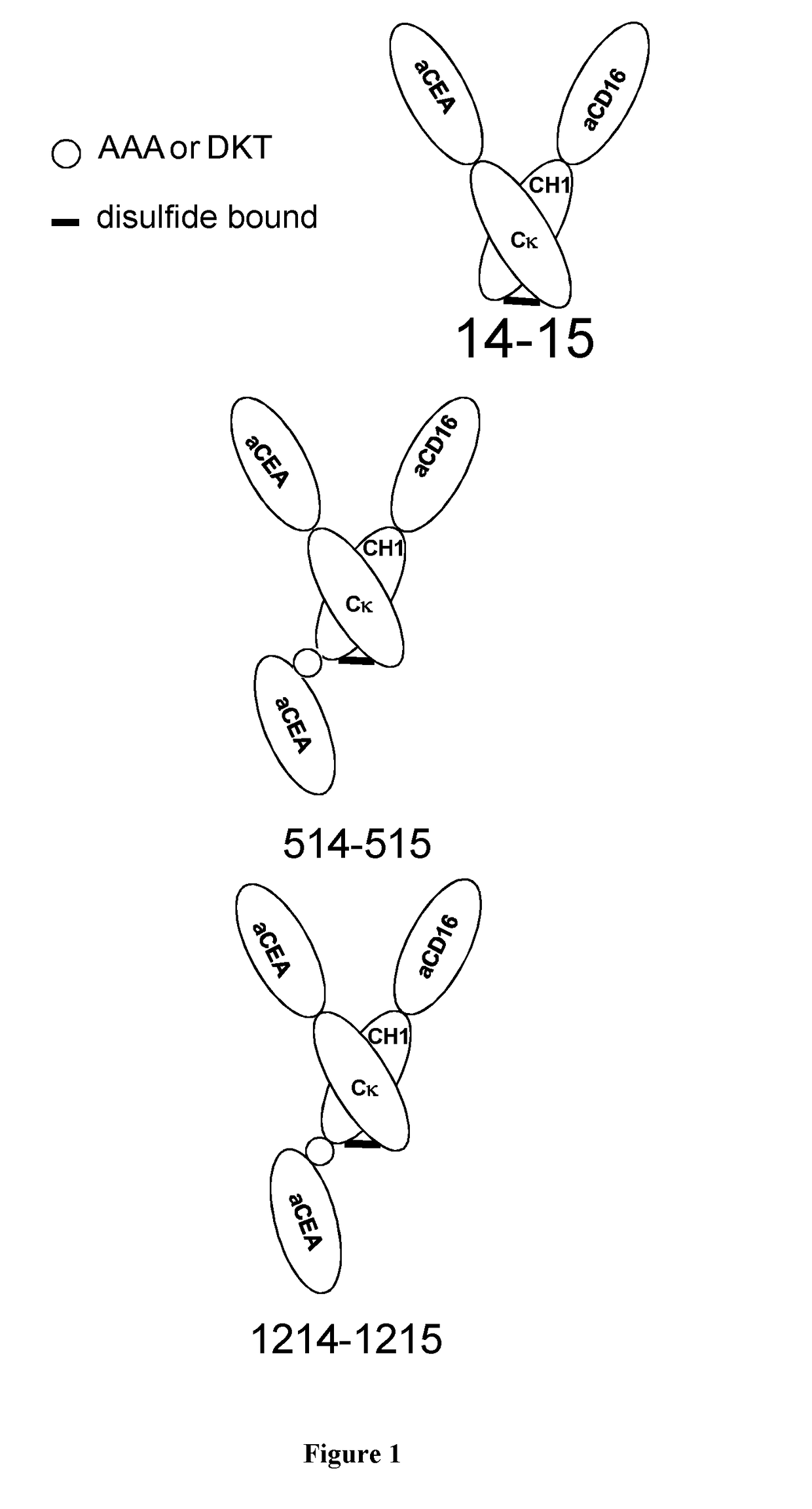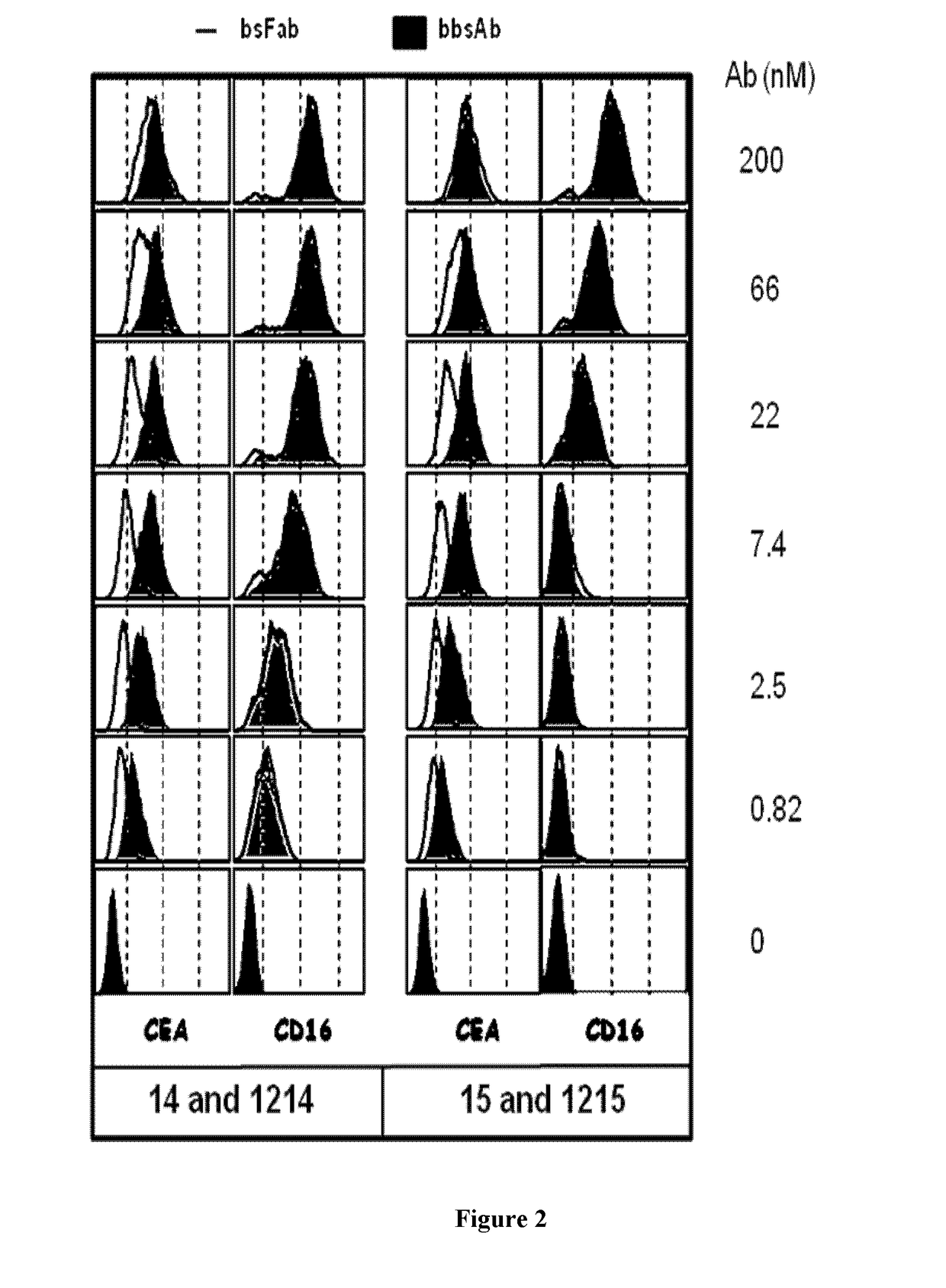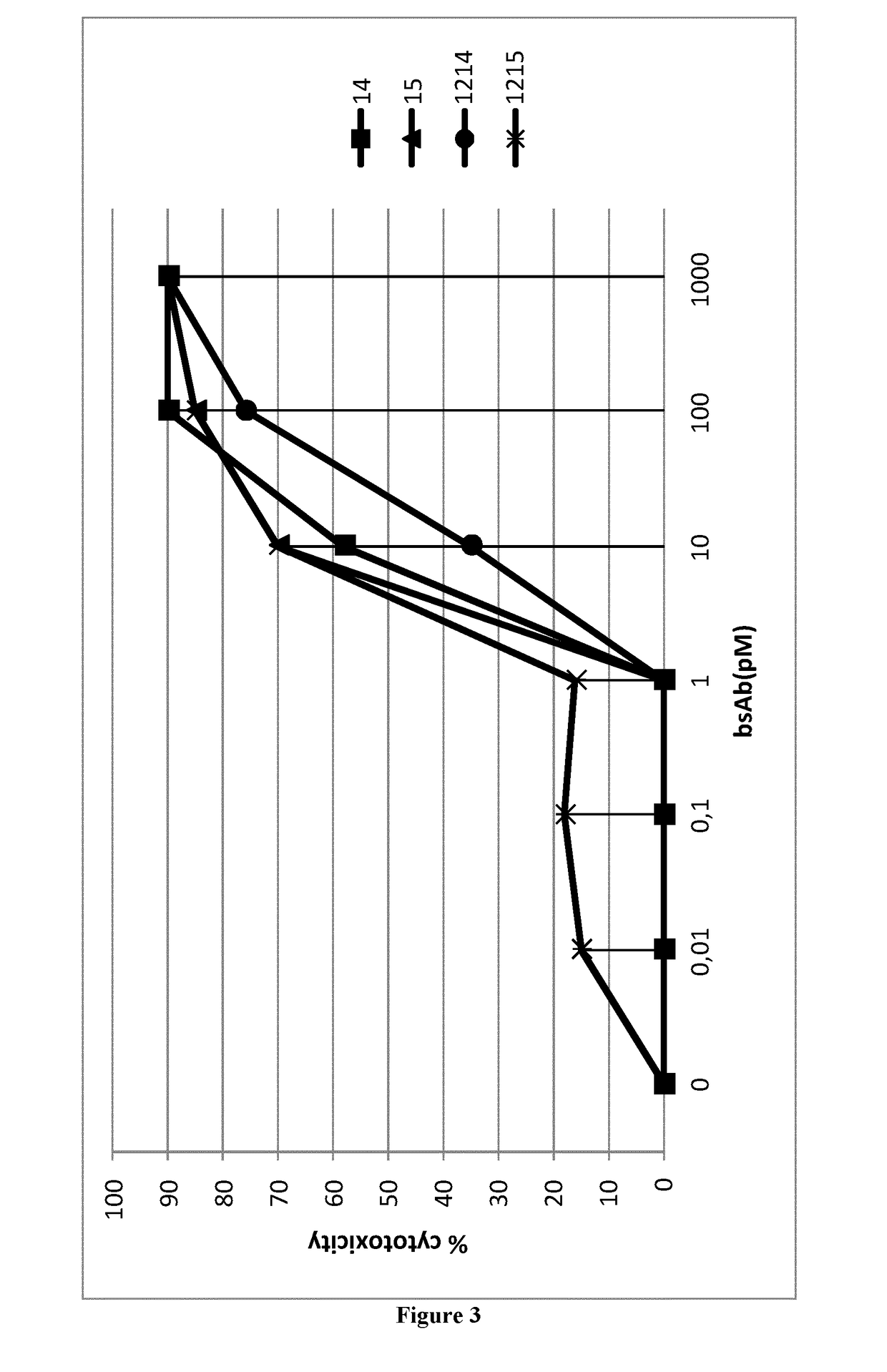Antigen binding formats for use in therapeutic treatments or diagnostic assays
a technology for diagnostic assays and therapeutic treatments, applied in the direction of immunoglobulins, peptides, drug compositions, etc., can solve the problems of inability to efficiently produce such molecules, bsabs never reached the market, and attempts to hinder
- Summary
- Abstract
- Description
- Claims
- Application Information
AI Technical Summary
Benefits of technology
Problems solved by technology
Method used
Image
Examples
example
[0134]Material & Methods
[0135]1 / Construction of the New Formats
[0136]p501 (SEQ ID NO:9): Insertion of anti-CEA sdAb 17 gene (Behar, G., Chames, P., Teulon, I., Cornillon, A., Alshoukr, F., Roquet, F., Pugniere, M., Teillaud, J.-L., Gruaz-Guyon, A., Pelegrin, A. and Baty, D Llama single domain antibodies directed against non-conventional epitopes of tumor-associated carcinoembryonic antigen (CEA) absent from non-specific cross-reacting antigen (NCA). FEBS J, 2009, 276, 3881-93) of pHen1-CEA17 (SEQ ID NO:10) into p1 (SEQ ID NO:11) at the C-terminal end of CH1 domain (Not I site):
[0137]PCR: 5 ng pHen1-CEA17 (SEQ ID NO:10), 0.5 U Taq Polymerase Deep-vent (New England Biolabs), 10 μM of primer 5′ Not VHH and primer 3′ Not VHH rev, 5 μL Tp 10×, 1 μl MgSO4 1 mM, 4 μl dNTP 2.5 mM, H2O up to 50 μl, 94° C. 3 min, 94° C. 45 sec, 60° C. 45 sec, 72° C. 45 sec×35 cycles, 72° C. 10 min.
[0138]
Primer 5′ Not VHH NotSEQ ID NO 1:CCACGATTCTGCGGCCGCAGAGGTGCAGCTGGTGGAGTCTGGPrimer 3′ Not VHH revSEQ ID NO 2...
PUM
| Property | Measurement | Unit |
|---|---|---|
| diameters | aaaaa | aaaaa |
| pH | aaaaa | aaaaa |
| pH | aaaaa | aaaaa |
Abstract
Description
Claims
Application Information
 Login to View More
Login to View More - R&D
- Intellectual Property
- Life Sciences
- Materials
- Tech Scout
- Unparalleled Data Quality
- Higher Quality Content
- 60% Fewer Hallucinations
Browse by: Latest US Patents, China's latest patents, Technical Efficacy Thesaurus, Application Domain, Technology Topic, Popular Technical Reports.
© 2025 PatSnap. All rights reserved.Legal|Privacy policy|Modern Slavery Act Transparency Statement|Sitemap|About US| Contact US: help@patsnap.com



